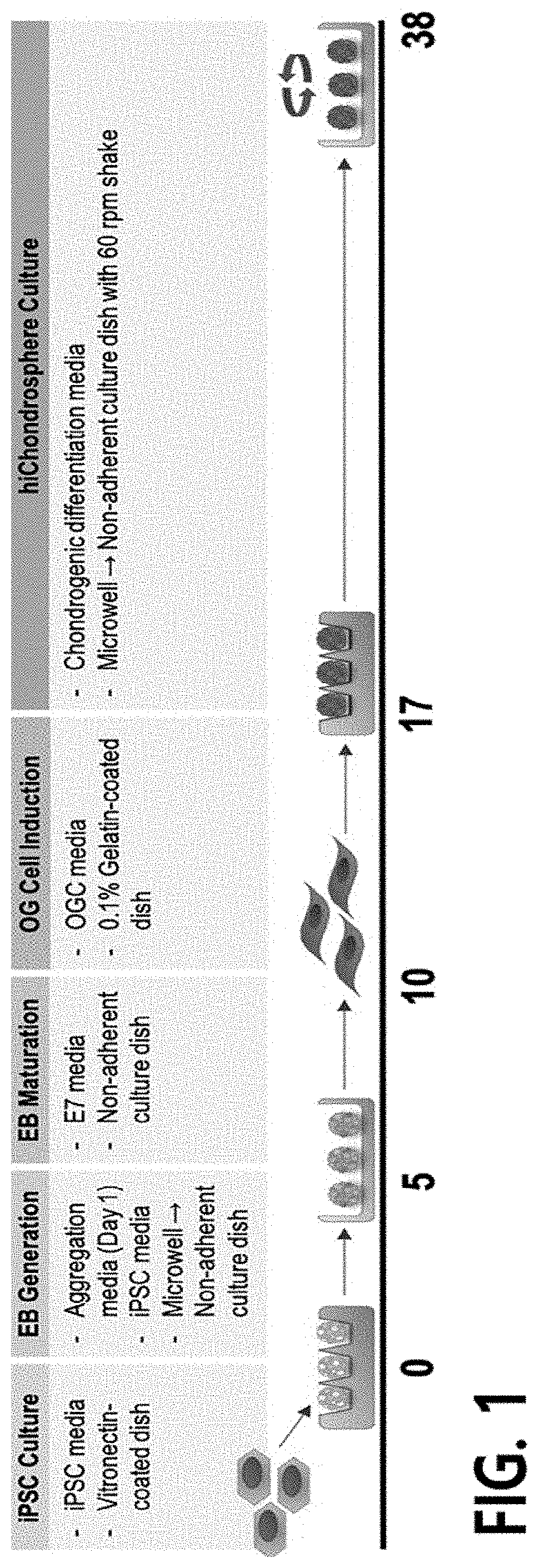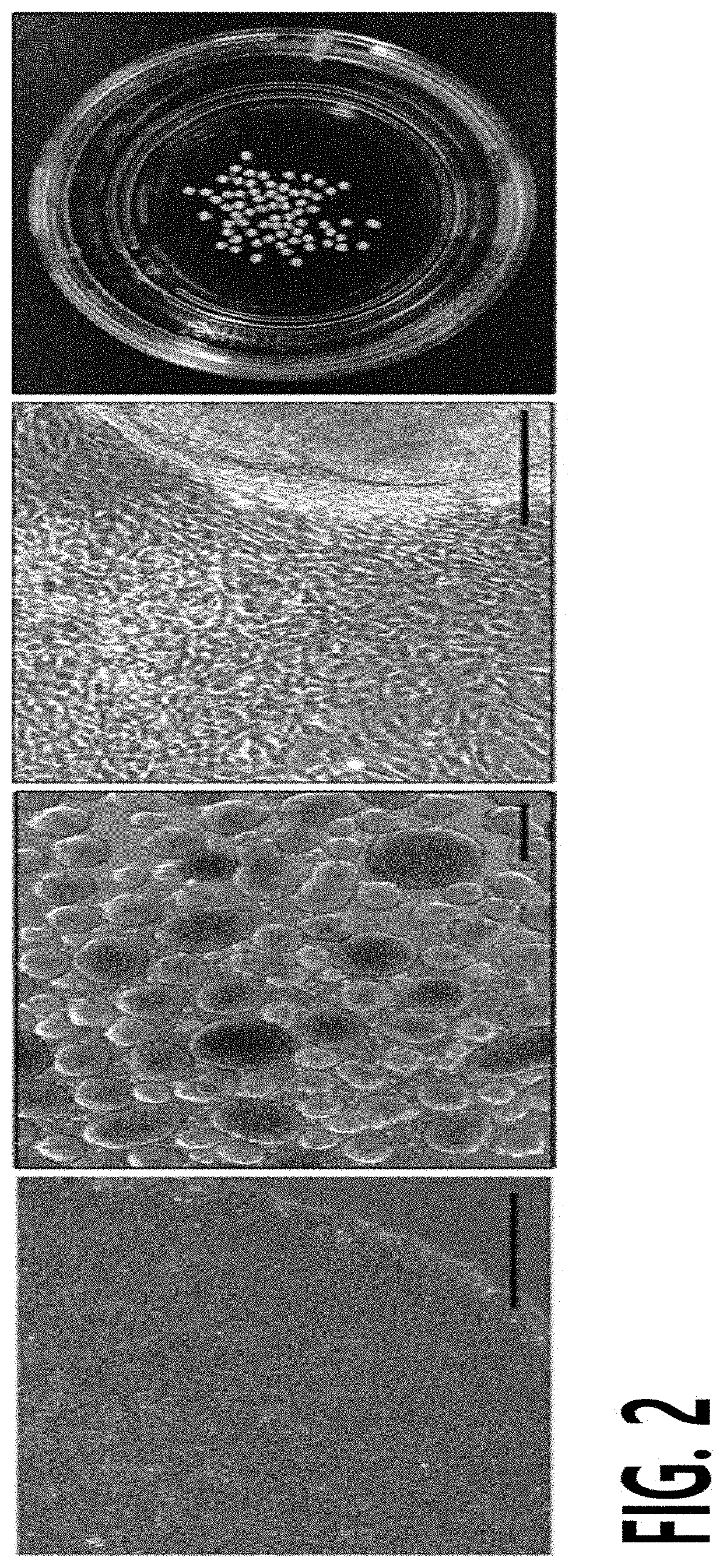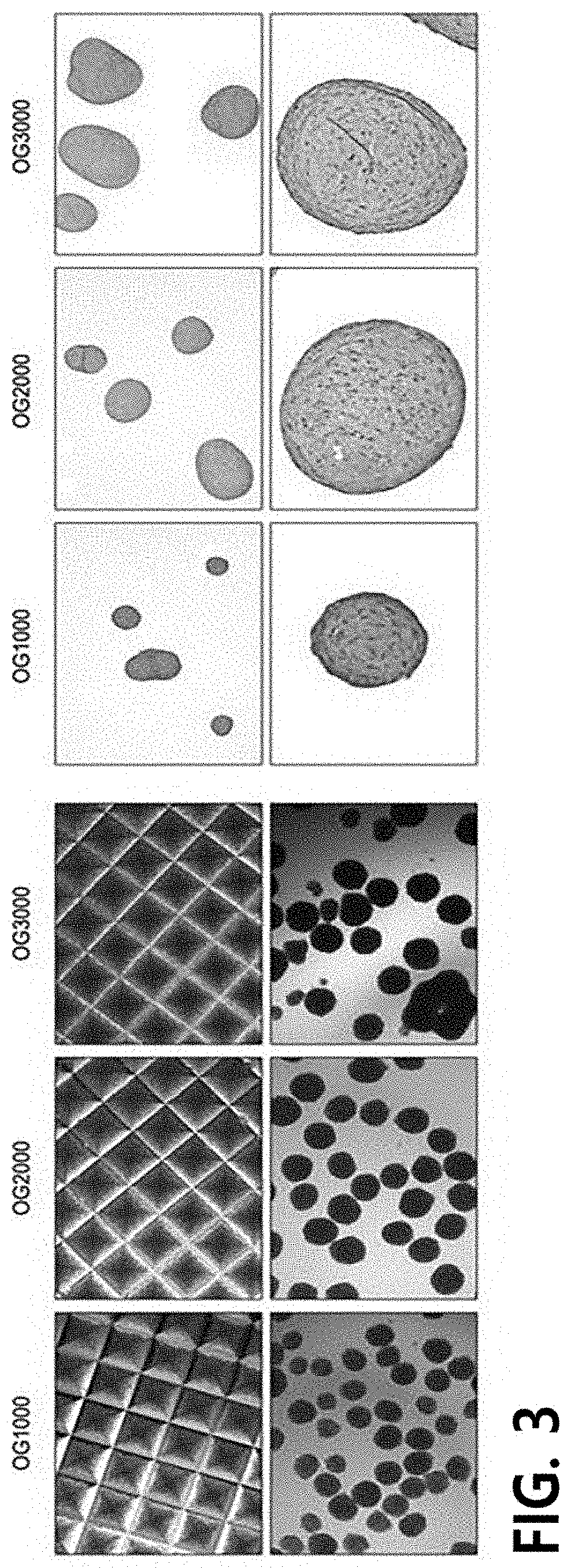Method for preparing pellets of chondrocytes from human induced pluripotent stem cells, and use thereof
a technology of human induced pluripotent stem cells and chondrocyte pellets, which is applied in the field of preparing chondrocyte pellets, to achieve the effects of uniform size, high differentiation rate, and uniform differentiation degr
- Summary
- Abstract
- Description
- Claims
- Application Information
AI Technical Summary
Benefits of technology
Problems solved by technology
Method used
Image
Examples
example 2
[0126]Formation of Embryoid Body from hiPSCs
[0127]The CBMC-derived hiPSCs prepared in Example 1 were resuspended in an Aggrewell medium (STEMCELL), and seeded in a 100-mm culture plate at a concentration of 2×106 cells / well. The seeded hiPSCs were incubated in a 37° C. incubator for 24 hours, and the following day, the culture medium was replaced with a TeSR-E8 medium (glutamine and 4-(2-hydroxyethyl)-1-piperazineethanesulfonic acid (HEPES) were added to a DMEM / F12 medium containing 543 μl / ml of sodium hydrogen carbonate (NaHCO3), 64 μg / ml of L-ascorbic acid 2-phosphate magnesium, 14 ng / ml of sodium selenite, 107 μg / ml of transferrin, 20 μg / ml of insulin, 100 ng / ml of fibroblast growth factor-2 (FGF-2) and 2 ng / ml of transforming growth factor beta 1 (TGF-β1)), followed by forming and obtaining an embryoid body (EB) by further adherent culture for 6 days.
example 3
[0128]Formation and Isolation of Outgrowth Cells from EB
[0129]The EB formed and obtained in Example 2 was suspended in a DMEM medium (Thermo Fisher Scientific) containing 20% fetal bovine serum and 10% penicillin / streptomycin, and cultured on a gelatin-coated plate in 5% CO2 at 37° C. for 7 days to induce the formation of outgrowth cells (OGs). To this end, the bottom surface of a culture plate was coated with 0.1% gelatin for 30 minutes, and completely dried before use.
[0130]The formed OGs were separated from the gelatin-coated plate, passed through a 40-μm cell strainer (Thermo Fisher Scientific) to remove an EB clump, thereby isolating and obtaining a single cell unit of OGs.
example 4
[0131]Preparation of Chondrocyte Pellets from OGs and Differentiation into Chondrocytes
[0132]The single cell units of OGs isolated and obtained in Example 3 were counted and plated in a microwell to reach 1×103, 2×103 or 3×103 cells / well per pellet, and then centrifuged at 1800 rpm for 5 minutes to facilitate the aggregation of cells in a pellet form, thereby preparing chondrocyte pellets. As a result of measuring diameters of the prepared pellets, it was confirmed that the diameter of the pellet consisting of 200 OGs is 152 μm, the diameter of the pellet consisting of 500 OGs is 182 μm, the diameter of the pellet consisting of 1,000 OGs is 226 μm, the diameter of the pellet consisting of 2,000 OGs is 278 μm, the diameter of the pellet consisting of 3,000 OGs is 334 μm, and the diameter of the pellet consisting of 5,000 OGs is 462 μm.
[0133]Afterward, the prepared chondrocyte pellets were inoculated in a chondrogenic differentiation medium, replaced with a fresh medium once a day, an...
PUM
| Property | Measurement | Unit |
|---|---|---|
| diameter | aaaaa | aaaaa |
| diameter | aaaaa | aaaaa |
| inner diameter | aaaaa | aaaaa |
Abstract
Description
Claims
Application Information
 Login to View More
Login to View More - R&D
- Intellectual Property
- Life Sciences
- Materials
- Tech Scout
- Unparalleled Data Quality
- Higher Quality Content
- 60% Fewer Hallucinations
Browse by: Latest US Patents, China's latest patents, Technical Efficacy Thesaurus, Application Domain, Technology Topic, Popular Technical Reports.
© 2025 PatSnap. All rights reserved.Legal|Privacy policy|Modern Slavery Act Transparency Statement|Sitemap|About US| Contact US: help@patsnap.com



